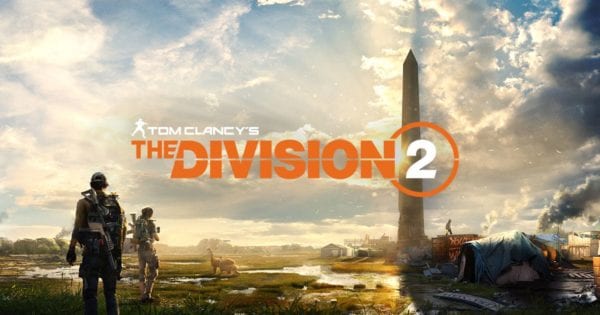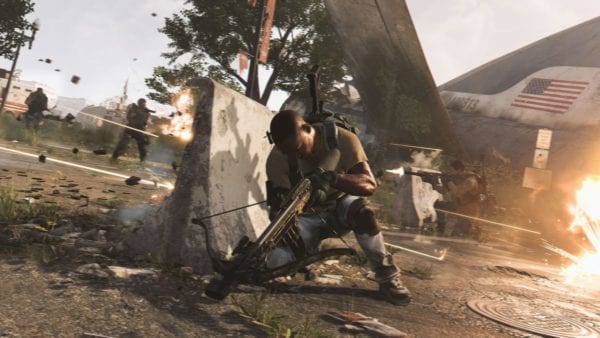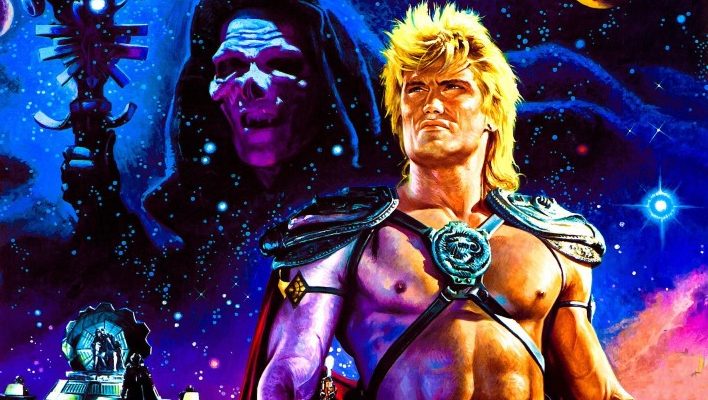Shaun Munro reviews Tom Clancy’s The Division 2…

The “looter shooter” genre is one tailor-made to invite derision from press and players alike, if only for its stereotypical reliance on rote repetition in the pursuit of Shiny Things, while putting basic facets of gaming narrative – that is, story and character – to the back-burner.
And though Tom Clancy’s The Division 2 isn’t really an exception in the latter department – taking a much-criticised “apolitical” approach in a game that still occasionally feels like an NRA advert – it does what so few of its genre brethren haven’t; it minimises the grind and puts unprecedented paid to rich, compelling side content.
The original The Division landed roughly three years ago to solid acclaim, though there was justifiable push-back against its excessively bullet-spongey enemies and a lacklustre endgame at launch. By all accounts Ubisoft and Massive Entertainment worked hard to make up for the release window issues during the years that followed, but it’s a pleasure to report that its sequel is teeming with worthwhile sorties right out of the box.
Fundamentally little has changed from the first game, though; you’re once again a Strategic Homeland Division agent plonked into a desolate post-apocalyptic American city – Washington, D.C. rather than New York City this time – as you’re tasked with battling enemy factions and bringing the city under control.
It’s staggering just how little of this game is propped up by its utterly lacklustre story, which on one hand is laughably piecemeal in its delivery, though given the high quality of the environmental storytelling and the groan-worthy nature of the mercifully rare cut-scenes, it’s probably just as well.

The Division 2 is a game propelled by its world-building and its stunningly rich atmosphere. The bespoke narrative is almost instantly transparent and forgettable, but the self-contained plots within missions both critical and peripheral do a bang-up job of selling the ruthless desperation throughout D.C. That might sound dangerously close to the ever-popular “emergent gameplay” which begs players to create their own fun, but rest assured, there is plenty curated, rewarding fare to tackle here.
The critical path is comprised of a dozen-or-so main missions leading all the way up to the level cap of 30, but in order to keep step with the light level-gating requirements, you’ll need to tackle some side missions too. In so, so many live-service games this would result in rote, tired busy-work that lasts for an agonising number of hours, but to Massive’s enormous credit, I never had to spend more than an hour at a time gearing myself up for the next mission.
It’s a delicate balance the game strikes, because reaching level 30 and finishing the base campaign will take most players around 25 hours, and yet virtually none of those hours felt arbitrary or tiresome. The main missions themselves are surprisingly varied both in terms of environments and objectives, exploiting Washington’s real-life geography while even daring to stage set-pieces within some of the city’s most iconic monuments.
The potent “just one more” appeal also owes much thanks to the startlingly diverse array of side content, from fleshed-out side missions, to assassination bounties, control points, projects which allow you to cash-in gear and activities for extra XP, and an abundance of “random” events such as interrupting public executions and shutting down propaganda broadcasts. And of course, these activities all work towards scoring better loot, raking in the XP and unlocking points which can be used to bolster skills and buffs.
That’s just a taste of what The Division 2 has to offer, really, and it all makes reaching the cap a fiendishly addictive, compulsively engrossing joy. But this structure would mean little without strong fundamental gameplay, and just like its predecessor, the game’s gunplay is among the finest of the looter shooter lot.
Taking down enemies is enormously satisfying and cover mechanics are extremely responsive, while the much-loathed sponginess of the first game has been toned down significantly. Rather, elite enemies are now encased within armour which needs to be broken, after which they can generally be eliminated with ease.

It’s just as well that the gunplay is so tight, because this certainly isn’t an easy game, even when played on standard Story difficulty with three squad-mates. You will die a lot, with tenacious A.I. keenly employing lifelike strategies such as flanking and retreating, rather than just mindlessly attempting to overcome you with sheer numbers. Played solo, The Division 2 is naturally much more difficult, and Ubisoft themselves advise that the definitive way to play is with a human squad, ideally of your friends if possible.
Having played the overwhelming majority of the game with randoms, Ubisoft and Massive deserve a measure of praise for their approach to matchmaking – yes, a measure, because it still has issues – and allowing players to slip in and slip out of match-ups as fast as possible.
Though the matchmaking menu could definitely use some work – the lack of matchmaking for side missions, for instance, is completely bizarre – it’s extremely user-friendly in allowing players to quickly seek out comrades to tackle a story mission, explore, blast through some random side content, collect bounties, enter the Dark Zone, or even answer a call from an agent in distress.
The expediency of the loading times – at least on PC – is enormously helpful in fostering a snappy multiplayer layout, where if a squad doesn’t take your fancy, you can be re-assigned to another in around 30 seconds. Voice chat certainly adds a fun wrinkle if you can find some like-minded players, though those playing on PC will thankfully be able to use text chat if all else fails.
And if this already sounds like a lot of game, it’s really just scratching the surface. The Division 2‘s endgame is off to an intriguing start, introducing an unexpected twist on the formula of the core story, even if it remains to be seen exactly how deep the loot-hunting rabbit-hole will go. Compared to the first game, its post-story content is positively jam-packed, and it’s easy to see how players will get sucked into a loop that, fingers crossed, won’t start to invite ennui any time soon. With three free DLC packs due to drop in the coming months, hopefully they’ll serve players as meaningfully as the day-one content.

On top of this, the Dark Zone is back, of course, offering up another devilishly intense PvP/PvE romp for those craving high-end gear. Touting a gorgeously grimy aesthetic compared to the already chaos-strewn immediate D.C., the DZ appears to be as nerve-wracking as in its predecessor. Those with little deference towards the comprehensive loot grind, however, can simply ignore it completely. The same can be said for the addition of more conventitonal PvP multiplayer in Conflict mode, yet due to it being tucked a few tabs away from the main map, it’s quite easily missed.
Though The Division 2 isn’t a miraculous visual improvement over the first game, it is an extremely impressive achievement all the same, especially given the lower standards many tend to have for looter shooter/live-service titles. Played at 4K resolution – with a little help from Digital Foundry’s fantastic optimised settings – Washington D.C. is an eye-watering joy to soak in, a stunning vision of a real-life city taken back by nature, where precious little visual acuity has been sacrificed in the quest to maintain order during frenzied firefights.
The lush green overgrow, the damp concrete floors, the meticulously-rendered real-world locations – they help set a new photorealistic standard for gritty games of this type. Aside from some distractingly hideous facial animations in the game’s settlements, that is.
The top-notch graphics are perfectly complimented by a beefy sound package, with combat effects reacting dynamically to their environments and often producing noticeably different results in kind. Ola Strandh’s electronic musical score also does a surprisingly strong job staving off both repetition and post-apocalyptic thriller cliches, ratcheting up the terror when a high-level enemy attacks, and making you feel like a deeply empowered badass when you take them down.
The Division 2 keeps an impressive number of plates spinning while skirting clear of the soulless live-service void. It isn’t perfect by any means, but Massive has done a remarkable job of making a potentially messy experience feel uncommonly holistic. The UI could be better in places and matchmaking needs a bit of a fine-tune, but whether you’re a franchise newbie or a salivating returning fan, the experience is likely to be one of shockingly consistent joy.

Pros:
+ Tight, fluid gunplay and movement.
+ Washington is an outstandingly realised setting.
+ Multiplayer is fantastic (with the right group).
+ Gorgeous visuals.
+ Punchy sound and music.
+ An insane amount of worthwhile content.
Cons:
– The story is worthless.
– The UI can feel clumsy and overwhelming at times.
– Matchmaking options could be better.
Rating: 8.5/10
Reviewed on PC (also available for PS4 and Xbox One).
Shaun Munro – Follow me on Twitter for more video game rambling.











